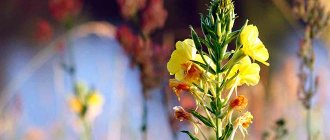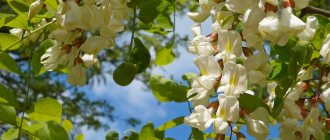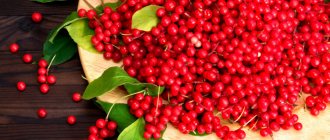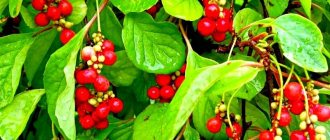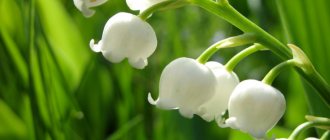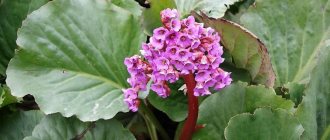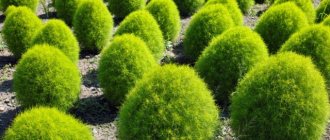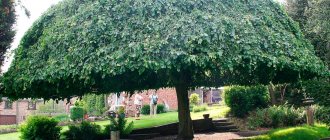Almost everyone knows the tonic tincture of lemongrass, which is sold in pharmacies. Not everyone knows what kind of plant this is, what it looks like, how it grows and how it blooms, but it is a beautiful climbing shrub that can decorate the space near the house. In addition, you can eat lemongrass 2-3 berries a day if there are no contraindications. Schisandra chinensis is not a tree or a herb, but a shrubby vine that requires any support.
Schisandra blooms
How to brew lemongrass tea
A very unusual plant grows in the Far Eastern taiga - Chinese lemongrass. It is a vine that can reach up to 15 meters in length and has a woody stem covered with green leaves. In spring, the plant begins to bloom, becoming covered with white-pink fragrant flowers. By autumn, beautiful red berries appear on the vine. They have a bitter, sour-salty, spicy taste. When crushed, all parts of the plant release a distinct lemon aroma. The vine itself and its fruits are used as medicinal raw materials.
For what diseases is it used?
Of course, the vine is used as a tonic to restore strength. It is recommended for colds, bronchitis, and pneumonia.
Other diseases that Schisandra helps to cope with:
- neurasthenia;
- impotence;
- hypotension;
- myopia;
- cardiac ailments;
- ulcers, wounds;
- problems with stomach acidity;
- diabetes.
Composition of lemongrass
Schisandra began to be grown in China 250 years ago. The indigenous people of China have long used Far Eastern Schisandra as a refreshing and tonic. In Russia, the plant began to be used much later. Now it can be seen in the wild in Khabarovsk, Primorsky Territories, and Sakhalin. Since the plant is unpretentious, it can also be grown in the garden. It is used as a hedge.
The uniqueness of lemongrass lies in the fact that it contains lignans, substances with great potential in the field of biological activity. Scientists have proven that lemongrass has anti-inflammatory, antimicrobial, antitumor, tonic and antioxidant effects.
Lignans have a tonic effect on the central nervous system, which is why the plant is called an adaptogen. Schisandra increases the body's resistance to any difficult conditions. For example, with intense mental and physical stress, sudden climate change. Lignans are not used in official medicine, but they have been used in alternative medicine for tens of thousands of years. Many people compare lemongrass with eleutherococcus, aralia or ginseng.
Schisandra berries contain many useful elements:
- Anthocyanins, which have a powerful antioxidant effect.
- Organic acids (tartaric, malic and citric).
- Pectins.
- Vitamins C and E.
- Flavonoids.
- Tannins.
- In small quantities potassium, calcium, manganese, cobalt, iodine, barium and other trace elements.
- The seeds contain fatty oils, and all parts of the plant contain essential oil.
Description and chemical composition
The perennial flowering plant, reminiscent of a vine, is characterized by a fairly concentrated aroma of lemon, which is why it got its name.
Before focusing on the medicinal properties of Chinese lemongrass, it is worth first noting its external characteristics. The plant has a rather long wrinkled stem, the thickness of which does not exceed a few centimeters.
The leaves have an oval shape, resembling an ellipse, and the ripe fruits have a rich red hue and a bitter taste.
The peak of schizandra flowering is in May. It is during this period that insects begin to actively pollinate it.
The chemical composition of Chinese lemongrass boasts the presence of a whole range of useful substances. The main ones are presented in the table:
| Substance | Effect |
| Vitamins A, E, C | Natural antioxidants, have antimicrobial and restorative effects |
| B vitamins | Have a beneficial effect on the functioning of the thyroid gland, affect the condition of the skin, hair and nails |
| Essential oils | Analgesic and anti-inflammatory effect |
| Tannins and fatty oils | Improve skin, relieve inflammation, heal wounds |
| Flavonoids | Anti-inflammatory effect |
| Anthocyanins | Strengthens blood vessels, improves intestinal functions |
| Lignans | Stimulate the central nervous system, lower cholesterol levels, improve metabolism |
| Schizandrol and schisandrin | Tonic, antitoxic hepatoprotective effect |
| Organic acids (malic, tartaric, citric) | Activate metabolic processes in the body, normalize acid-base balance |
| Selenium | Prevention of malignant tumors, helps improve male potency |
The plant also contains rare macro- and microelements, including iodine and silver.
Application of lemongrass
The use of Schisandra chinensis has been proven to be highly effective for non-healing wounds, decreased performance, stress, and anemia. It is recommended to use this plant to accelerate fat burning, improve the functioning of the genitourinary system, respiratory system, improve sleep and eliminate hangover syndrome.
Schisandra tea will help cope with stress and bronchitis. Products with lemongrass are used in the treatment of dermatological diseases; it is effective for lichen planus, vasculitis, viral and blistering dermatoses, and psoriasis.
If you feel a loss of energy, you should not brew coffee, it produces a short-term invigorating effect that leads to nervous exhaustion. A cup of brewed lemongrass produces a gradual tonic effect; it appears after half an hour and lasts up to six hours. The decline also occurs gradually, so the nerve cells are not depleted. The pharmacy offers ready-made preparations based on schisandra, which increase performance and relieve depression.
Landing
Schisandra seedlings are purchased from a specialized nursery. It is best to take specimens that are 2 or 3 years old. They have a higher survival rate. When choosing planting material, special attention should be paid to inspecting the root system. It should be healthy, without signs of rot or mold, branched.
Important! Schisandra does not tolerate stagnant water, so it will not take root in swampy areas or will constantly get sick.
Preparing the site
Do not forget about high-quality preparation of the landing site. To begin with, you should choose an area with optimal lighting. A semi-shaded area next to trees, outbuildings, arches or gazebos for relaxation is best suited. This plant definitely needs support. If the area is open, then you will have to build it in the year of planting. It is worth paying special attention to soil moisture. The groundwater level should not be higher than 2 m.
Schisandra planting in Siberia is carried out only in the spring, because when manipulation is carried out in the fall, the plant will not have time to gain enough strength and take root, which will prevent it from surviving the frosts. Preparatory work on the site begins in the fall. To begin with, clear the area of plant debris and stones. Then the soil is cultivated to a depth of 30 cm. Immediately after this, the soil is disinfected using a solution of copper sulfate (3%) - 300 g of powder is added to 10 liters of water. This will be enough to process 10 m² of area.
A week after disinfection, the following is added to each square meter:
- 20 kg of humus;
- 10 kg of turf soil;
- 1 kg wood ash.
After adding nutrients, digging is carried out to a depth of 20 cm.
The holes are prepared immediately before planting. If several plants are planted, then a distance of at least 1 m is left between the holes. In rows, the step is similar. When planting next to outbuildings, at least 1.5 m are retreated from the wall.
Read the description of varieties of Schisandra chinensis.
The depth should be within 40 cm, width - 60 cm. The bottom of the hole must be covered with a layer of drainage (pebbles, expanded clay, etc.) 15 cm thick. The soil from the hole is mixed in equal proportions with leaf humus, compost, turf soil, and also added to this mixture is about 2 cups of wood ash.
Landing is carried out as standard:
- A seedling is placed in the hole.
- Fill the voids with a nutrient mixture.
- The trunk circle is compacted.
- Water with 10 liters of water.
- After absorbing moisture, mulch with a layer of compost mixed with peat (1:1).
- The shoots are tied to a support.
Seedling preparation
Preparatory work with a seedling is very easy to perform. The roots of the plant should first be immersed in a growth accelerator for 10 hours. “Epin” is suitable for this. Add 1 ampoule of the drug to 5 liters of water. In principle, this is the entire pre-planting treatment of the seedling. After this, they immediately proceed to planting the plant in open ground, in pre-prepared holes.
Contraindications for Schisandra chinensis
But such drugs are not always beneficial. Sometimes unpleasant consequences may appear, so it is not recommended to use them if:
- increased excitability,
- arterial hypertension,
- epilepsy,
- for chronic liver diseases,
- with increased intracranial pressure,
- in case of cardiac dysfunction,
- pregnancy.
In rare cases, side effects may occur: insomnia, tachycardia, allergies. Treatment with Chinese lemongrass is allowed only after a thorough examination and doctor’s opinion. This drink is contraindicated for children.
Preparation of lemongrass
Chinese lemongrass berries are harvested in the fall. To avoid damaging the mother plant, the brushes are cut with a sharp knife. They are placed in baskets or enamel dishes. They need to be processed on the same day. The berries are carefully removed from the brushes and laid out on a cloth to dry. After this, they are transferred to a baking sheet and dried in an oven at a temperature of 55-60°. They do not lose their properties for about two years.
You can freeze lemongrass berries by placing them in the freezer, pouring them into plastic containers or plastic bags.
Harvesting Far Eastern lemongrass for the winter
In order to preserve the medicinal properties of berries from the Far Eastern Schisandra vine, it is recommended to dry them for the winter. In this way, raw materials are prepared as follows:
- Whole bunches, not separated into individual berries, are laid out on a baking sheet, on which a layer of cloth or paper has previously been laid out. It is important to distribute the fruits so that they do not touch each other.
- The baking sheet with the raw materials is carried on your face under a canopy or into the attic. In the second case, you need to make sure that the attic is sufficiently ventilated.
- When the lemongrass is slightly dry, you can separate the clusters by removing individual berries from the stalk.
- The stalks are discarded, after which the remaining fruits are laid out in a thin layer.
- After this, the baking sheet is placed in the oven for 5-7 hours at a temperature of about 40-50°C.
- The procedure is repeated for several days.
Important! When dried according to all the rules, Far Eastern lemongrass acquires a dark red color.
How to brew lemongrass
To prepare a healing drink, you can use fruits, bark, and leaves. For one liter of boiled water, take 15 g of any type of raw material. The drink should steep for a few minutes.
Tea made from lemongrass leaves. Schisandra leaves make a delicious drink that can be drunk instead of tea. To preserve the aroma, do not use a thermos for brewing.
Lemongrass berry tea. Schisandra fruits can be brewed using the classic method. 1 tbsp. l. The fruit is placed in an enamel pan, 200 ml of water is poured in, and the mixture is boiled for 10 minutes. The tea is infused for 24 hours, then filtered. You can add a little sugar to the drink and drink it throughout the day.
Tea from the lemongrass vine. For the cold season, tea made from fresh or dried stems, which need to be cut into small pieces, is suitable.
Green tea with lemongrass. This drink gives a good mood and vigor, since lemongrass and tea successfully complement each other, enhancing the effect of each.
2-3 tsp. green tea
1 tbsp. l. dried lemongrass fruits
1/3 tsp. ground ginger
The berries need to be brewed in 500 ml of water and brought to a boil. Remove the mixture from the heat, add ginger and tea. After five minutes, the tea drink can be poured into cups, adding honey.
Do not overuse lemongrass tea. The norm is one, maximum two cups per day.
Schisandra tincture
Tinctures are most often prepared based on Chinese lemongrass. To prepare, lemongrass berries are poured with alcohol at a ratio of 1:5. The mixture must be infused for 10 days, placed in a dark place. Then the mixture is filtered, 20 ml of alcohol is added to the sediment and infused for another 10 days. Next, the two tinctures are mixed and filled with the same volume of purified water. This tincture is useful for dizziness, depression, and sleep disturbances. The course of treatment is 2 weeks. You need to take 2.5 ml 2-3 times a day.
An unusual plant grows in China and the Far East - Schisandra chinensis. It is a long, branching vine with a woody stem and flexible shoots with green leaves and red berry-like fruits. This plant is considered medicinal.
Growing and caring for Far Eastern lemongrass
This is an unpretentious, high-yielding garden crop, the cultivation of which will not be difficult. Caring for shrubs involves the most basic procedures: weeding, watering, pruning, loosening the soil.
It is better to plant the crop in shade or partial shade, in areas well protected from the wind. The harvest is usually harvested 4-5 years after planting, not earlier.
Advice! Since this plant needs support, it is recommended to place plantings near fences and walls of houses.
Seeds are planted in autumn. It is recommended to soak them in water 2-3 days before planting. Planting material is sown in small furrows, after which it is sprinkled with a thin layer of humus (about 1.5 cm).
You can learn more about how to grow Far Eastern lemongrass from the video below:
Medicinal properties of lemongrass
The leaves, fruits and stem are considered medicinal. The chemical composition of the plant is strikingly diverse:
- Vitamins: C and E.
- Microelements: manganese, copper, selenium, nickel, barium.
- Macroelements: iron, potassium, magnesium, calcium.
- Organic acids: tartaric, malic, citric.
- All parts of the plant contain large amounts of essential oils. And the seeds contain fatty compounds.
The chemical composition of the plant has not been fully studied. But based on the available data, one can judge how useful Schisandra chinensis is.
Surprisingly, no toxic compounds of plant origin (alkaloids, glycosides, etc.) were found in Schisandra chinensis.
Due to the high content of useful substances, lemongrass has the following medicinal properties:
- Accelerates regeneration. Regular consumption of the fruits of this plant promotes wound healing and restoration of damaged tissue.
- Tones. Schisandra decoction gives vitality, relieves fatigue and increases performance. The person becomes more energetic.
- Improves mood. Schisandra infusion calms, relieves stress and tension.
- Speeds up metabolism. All metabolic processes of the body improve, which promotes weight loss.
- Treats skin infections. Concentrated lemongrass decoction copes well with fungal infections. This product can also be used to wash inflamed scratches and small purulent wounds.
Chinese lemongrass is used in the treatment of bronchitis, skin lesions, and inflammatory processes in the kidneys. In addition, with regular use of this plant, a person’s overall well-being significantly improves and resistance to infections improves.
Varieties
Breeders have developed many varieties, but only two are the most popular. The first of them has a non-trivial name - Firstborn. This is an unpretentious and frost-resistant plant with pink flowers growing in the form of brushes. One brush can contain up to 40 berries. The firstborn is raised in central Russia and the Moscow region. Sadovoy has approximately the same habitat. This variety is characterized by shiny and greenish leaves. Its fruits are very juicy and sour.
How to brew lemongrass
There are several basic recipes for making lemongrass drinks. It all depends on which parts of the plant will be used. So, the healthiest and most delicious recipes:
- Berry tea. For the recipe you will need 2 tbsp. spoons of fresh berries or 3 tbsp. dried spoons. Place the raw materials in a thick-walled teapot or thermos and add a liter of boiling water. Brew for at least 2 hours so that the berries are well brewed. You can add 10 grams to the finished tea. natural honey.
- Liana tea. For the recipe you need to take 2 tbsp. tablespoons chopped and dried Schisandra chinensis leaves. Place in an enamel bowl and pour in 500 ml. water. Place on the stove, bring to a boil and cook for 10 minutes. Remove from heat and cool naturally. You can add a spoonful of honey or a slice of lemon to your tea.
- Tea made from dry powder of lemongrass berries. 2 tbsp. spoons of raw materials pour 0.5 liters of boiling water and leave for an hour, stirring or shaking. Strain the broth through a fine sieve and drink like regular tea.
Before you buy lemongrass berry powder, you need to check the quality of the raw materials. The powder should be dry, red or burgundy in color with a pleasant lemon aroma. You should not buy caked raw materials with an unpleasant odor.
- Tea with lemongrass and rosehip. For the recipe you need to take a tablespoon of lemongrass and rose hips. Pour the ingredients into 0.5 liters of hot water (but not boiling water!). Leave for about an hour, then strain. Drink a little throughout the day.
- Green tea with lemongrass. Take a tablespoon of each component and put it in a 0.5 liter teapot. Pour boiling water over the raw materials and leave for half an hour. Pour into cups and drink like regular tea. You can add honey or lemon.
All recipes are tested and popular. They can be used to improve health or just because they taste good.
Green tea with rose hips is an excellent remedy for colds. But for this it needs to be brewed correctly. No boiling water! This rule must be observed, since vitamin C is destroyed at high temperatures.
Rules for collecting and harvesting fruits
Since Chinese lemongrass has a huge list of beneficial properties, which we will consider further, we will analyze the rules for collecting and preparing these healing berries.
The fruits themselves, foliage, bark and seeds are suitable for medicinal needs. There are some nuances of collection:
- Schisandra bark is harvested in the spring season.
- Leaves and shoots in August. For drying, finely chop and spread in a thin layer under a canopy. It is important to remember to turn it over periodically.
- When the bush bears fruit, the stems are collected.
- Leaves for flavonoids are harvested at the moment of their blossoming. To obtain a mucous mass from a leaf blade, you need to collect it during leaf fall.
- Wu Wei Zi fruits are harvested after they are fully ripe. From the beginning of autumn until the first frost, the ripening process itself occurs. Prepare containers for berries in advance. They try to avoid galvanized buckets, since the juice of the collected fruits will oxidize the material. It is better to choose enamel dishes, baskets, barrels. The bunches must be cut extremely carefully with a sharp knife, without damaging the stem itself. You have a day to prepare fresh berries.
Basically, the fruits of the Far Eastern plant are harvested in these ways:
- Dry the berries under a canopy for three days without direct sunlight. Next, you need to inspect the fruits, remove branches, receptacles and other debris. We further dry the selected berries in the oven, maintaining a temperature of 60 degrees Celsius. Using this processing method, the fruits retain all their beneficial properties for 2 years.
- You will need a hydraulic press to squeeze the berries. After squeezing, the fermentation process occurs. Afterwards you need to dry it in special thermal dryers when heated to 35-40 degrees Celsius and completely dry it at 60-70 degrees. And the seeds, having previously been separated, are dried in hot-air ventilation dryers.
Unfortunately, fresh lemongrass fruits are difficult to find and buy. But many people grow this crop in their garden plots. The berries, laid out in a thin layer in boxes, are immediately dried in a ventilated area. Then they are put into small canvas bags. The juice is squeezed out of fresh berries without damaging the seeds and preserved with sugar. After standing for several days, the juice will acquire a jelly consistency.
The fruits are also covered with sugar, ground well and placed in a glass container. Store in the refrigerator.
Far Eastern Schisandra fruits are difficult to eat fresh due to their specific taste. Therefore, they are dried, and also made into preserves, jams and juices. They are also used as a spicy seasoning for compotes, jelly and syrups in canning. The leaves of the plant are used for pickling mushrooms, tomatoes and cucumbers. To add special notes to the wine drink, add lemongrass juice.
It is especially worth noting the contribution of the Far Eastern shrub to the cosmetics industry, soap making and perfumery. The fact is that essential oils, which are present in significant quantities in fruits, are highly valued on the market and are often added to the products of one or another cosmetic company, delighting the end consumer.
Infusion of lemongrass
In addition to decoctions and teas, you can prepare a useful alcohol tincture from Schisandra chinensis. The recipe is simple:
Fruits and alcohol are taken in a ratio of 1:5. The ingredients must be placed in a glass bottle, tightly closed and stored in a dark place. The tincture needs to be shaken periodically. The product will be ready in 15 days. The tincture must be filtered and diluted with clean water in a 1:1 ratio. Take a teaspoon before meals. The course of treatment should not exceed 2 weeks.
When and how does it bloom
Flowering occurs in the first half of July.
Types of flowers
During growth, the buds are pale white. Just before they start to fall, they turn a beautiful light cream color.
Flower shapes
Schisandra flowers are similar in shape and appearance to magnolia flowers, created from wax. The buds are collected in inflorescences. Each includes 3-5 flowers.
Flowering period
At this time, flowers located in the axils of the leaves attract insects for pollination with a strong aroma.
Frame
They are on long stalks and bend slightly to the ground.
Contraindications and harm
Like any medicine, lemongrass has contraindications and they are significant.
- Individual intolerance. This happens often, since plant tissues contain a lot of essential oils, which are allergens.
- Pregnancy.
- Arterial hypertension.
- Heart rhythm disturbances.
- Nervousness and increased excitability.
In these situations, it is better not to use Chinese lemongrass. But if in doubt, it is better to consult a doctor. Schisandra can cause harm only in two cases: use for contraindications and use in excessive quantities.
Chinese lemongrass is a plant that has medicinal properties and is widely used in folk medicine. The shrub looks very beautiful and often becomes a decoration for a personal plot. However, few people know how to properly brew lemongrass branches to prepare a tasty and healthy drink.
Pruning lemongrass when kept in a room
It is best to carry out pruning at home in the fall, before the start of the dormant period. If this has not been done, then the procedure can be carried out in early spring before sap flow begins.
At the same time, old, damaged, dried shoots are separated. In addition, there is a need to remove vines that thicken the crown.
You need to monitor the shoots that grow from the root. It is believed that there should not be more than 6 pieces. If there are more of them, then the extra ones must be removed.
Useful properties of lemongrass decoction
In folk medicine, not only the branches and leaves of Chinese magnolia vine are used, but also the berries and seeds of this plant. The lemongrass drink has many beneficial properties.
- Saturates the body with vitamins and microelements;
- Normalizes heart function;
- Strengthens the immune system;
- Increases potency;
- Tones;
- Improves metabolism.
Schisandra leaves and shoots should be harvested in the spring. It is enough to simply chop them, dry them and pour them into a paper bag. Use this preparation to brew lemongrass tea in winter.
Care
When growing and caring for Far Eastern lemongrass, you need to take into account that this is an unpretentious plant.
Dipladenia (Mandevilla) - growing and care at home
To grow it, you need to build a frame. It is done during planting. To do this, it is necessary to install pillars 2-2.5 meters high. A rope or wire is pulled horizontally through them. Immediately after planting, the plant is tied up. This is then done as needed.
Temperature
Indoor lemongrass likes sunny and warm places. It doesn't like to grow where there is shade. Schisandra does not tolerate strong drafts and dry winds. The place where it grows should be protected from the wind.
Lighting
Schisandra needs plenty of light, but there should not be intense sunlight. A good option is to grow it in shaded conditions. This could be, for example, a shadow cast by a house, barn or fence.
Watering
This plant likes to be watered regularly. However, care must be taken to avoid over-moistening. If this is allowed, the result may be rotting of the Schisandra root system or infection with a fungus.
Advice. When planting it, you need to make sure that no water gets on it from the roof slopes.
Watering is necessary when feeding or during hot weather.
Spraying
Spraying the leaves is especially necessary in dry weather because they dry out much faster than the roots.
Humidity
Too much humidity can be harmful to the plant. The time for watering should be chosen when the top layer of soil becomes dry.
In areas where groundwater runs close to the surface, it is recommended to pour a mound of earth or choose an elevated place for growing lemongrass.
Priming
When caring for lemongrass, it is necessary to carry out hilling at first. To do this, add a small amount of soil around the stem without touching the roots. It will be beneficial for the plant to put a layer of mulch on top. It will help retain moisture longer after watering.
Feeding
This plant requires fertilizing with ammonium and potassium nitrate. Organic fertilizers are suitable for lemongrass: manure or bird droppings.
When the harvest is over, it becomes necessary to thoroughly loosen the soil and add ash.
In winter and dormant periods
To protect young plants, it is necessary to cover them with dry leaves or spruce branches before the onset of winter.
Shelter for the winter
An adult Far Eastern lemongrass does not need protection from frost.
How to brew lemongrass?
All parts of Chinese lemongrass are used in folk medicine - from leaves to roots. You can prepare a healing decoction in different ways. It all depends on what effect you want to achieve. Let's look at several of the most effective ways to prepare a lemongrass drink.
- To strengthen the immune system, improve mood and overall tone of the body, take a decoction of lemongrass. To prepare this product, pour 1 tbsp. l. dried branches, leaves or berries of the plant with a glass of boiling water. Let the liquid sit for 2 hours. Then strain the broth and take 2 tbsp. l. before eating.
- To strengthen the heart muscle and prevent cardiovascular diseases, take 1 tsp daily. decoction prepared according to the following recipe: mix 10 g of lemongrass berries with 100 ml of boiling water, cook in a water bath for 15 minutes.
- Mix dried branches and leaves of lemongrass with black tea in a 1:2 ratio. This drink can be drunk daily to improve overall tone, without any restrictions.
Take a decoction or tea with lemongrass constantly, and very soon you will notice an improvement in your condition - vigor and energy will appear, your performance will increase, and your mood will improve. Between lunch and dinner, eat a handful of lemongrass berries, and your digestion will significantly improve, which means that excess calories will not turn into subcutaneous fat.
When taking lemongrass decoction, remember that it has some contraindications. You should not drink this drink if you have insomnia, hypertension or increased nervous excitability. If you have any chronic diseases, consult your doctor before drinking lemongrass tea.
Where does it grow in Siberia
Siberia covers a fairly large territory. Just as in the case of the Urals, the climate in different parts of it can vary dramatically. This should be taken into account before starting to cultivate lemongrass. Siberia occupies a territory bounded in the west by the Ural Mountains, and in the north by the Arctic Ocean and the seas flowing into it.
Conventionally, the area is divided into parts:
- Northern - in winter the temperature drops below -40°C, and in summer it rarely rises above +10°C. In some areas there is snow all year round. Such an area is suitable for growing lemongrass only as an ornamental plant, because in such a climate it will take the form of a bush and will not bear fruit.
- Zapadaya - the winter temperature range here is -15...-30°C, the summer temperature range is +15...+35°C. Snow cover is established at the end of November and is 15–20 cm. In this area, the climate allows for the cultivation of lemongrass in open ground.
- Eastern - characterized by a sharply continental climate and is not suitable for cultivating the plant in question. In winter the temperature can be below -40°C, in summer it rarely rises above +15°C. Snow cover is established already in October and is about 25 cm. In the north of this territory, polar nights are observed in winter - the sun may not appear for a month or more.
The benefits of culture
Already in ancient times, people noted the beneficial properties of lemongrass. It was used in the following cases:
- to boost the immune system to prevent the development of dangerous viral infections;
- berries normalize the acidity of gastric juice;
- eliminates fatigue;
- increases blood pressure;
- relieves asthma;
- allows you to cope with significant mental or physical stress;
- prevents the development of respiratory system diseases.
Botanical description
The leaves are 10 cm in size. They are pointed at the top and have a wedge-shaped base at the bottom. The surface of the foliage is glossy, the color is dark green.
The flowers look attractive. When fully expanded, they acquire a pinkish tint. In good conditions for growing lemongrass, you can get a lot of berries that taste good. Each fruit is red in color. The fruits can be used to prepare preserves and jams.
The tree blooms in the last May - first June weeks. The culture is pleasing to the eye for 14 days. The berries are fully ripened at the end of September.
Jams, jelly and soft drinks are prepared from lemongrass fruits. The taste of berries as a candy filling is original. The leaves and bark are used to make aromatic tea.
Why doesn't lemongrass bear fruit?
The plant, as we have already noted, is quite capricious. There are several reasons why lemongrass does not bear fruit:
- Too dense shade interferes with the development of vines;
- A large number of shoots does not allow the plant to gain height. As a result, it remains stunted and produces little fruit. This is why you need to trim the bush regularly;
- Very often the problem is lack of pollination. Schisandra is pollinated by pollen beetles. Sometimes they are unable to cope with the task, especially when the cold season sets in or it starts to rain often.
